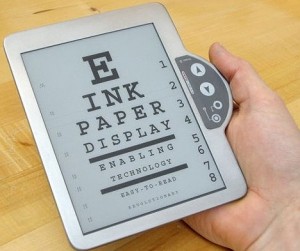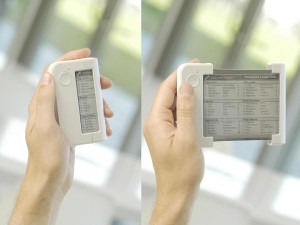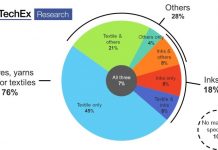 If you happen to have already read our last post, in which we referenced a Reuters article about the unfortunate decline in popularity of the e-reader, you might also be interested in checking out a few recent news items about the financial misfortunes of the Taiwan-based E Ink Holdings (formerly the E Ink Corporation).
If you happen to have already read our last post, in which we referenced a Reuters article about the unfortunate decline in popularity of the e-reader, you might also be interested in checking out a few recent news items about the financial misfortunes of the Taiwan-based E Ink Holdings (formerly the E Ink Corporation).
As we mentioned in that last post, E Ink’s “monthly revenues dropped 91 percent in two months“ at the end of 2011 (emphasis ours). This came after five years of near-constant growth for the company, which manufactures the displays of most Kindle and Nook e-readers. E Ink’s massive revenue drop seems to have been largely caused by declining sales of e-readers, which in turn seems to have been largely caused by the increasing popularity of tablet computers.
E Ink, however, appears to be a capable company led by a smart team of managers; they’ve clearly gone out of their way to diversify the sorts of products their technology can service. Seiko watches and credit cards, for instance, both use E Ink’s technology. And yesterday, MIT Technology Review ran an interesting story about a Chinese-made Android smartphone with an E Ink display. Here’s the interesting bit: The phone, which is currently just a prototype, was manufactured by Onyx International, a company primarily known for making e-readers. The phone weighs just 3.5 ounces, and is said to have a week-long battery life.

From the article:
Most analysts believe that device manufacturers like Onyx could help make e-ink more attractive on a smartphone. Gartner analyst Amy Teng says user interface tweaks could overcome some of e-ink’s limitations. “Rearranging the way of displaying images on an e-ink display can improve its screen refresh rate,” she says. “For example, keep the background unchanged except for the parts that need to change.”
And yet it doesn’t appear as if the smartphone route will necessarily be changing E Ink’s fortunes anytime soon. “Given the fact that mobile phones are more a lifestyle device these days,” says Pranabesh Nath, a Frost & Sullivan industry manager, “most users will be put off with [e-ink phones] due to the lack of ‘cool’ factor. This Onyx device can only succeed if priced very low,” he adds. “I don’t expect it to be a mainstream product anytime soon.”
And if that’s still not quite enough E Ink for you, here are two more short reads I’d recommend:
E Ink feeling the pinch from more capable tablets (TUAW)

Fair warning: This post will probably infuriate you—it’s one-sided and ill-informed—but I’m including the link because the comments beneath the story are so satisfying. Here’s an excerpt of a comment from ljewe7: “I love that eReaders are single trick ponies, and really hope there will always be a model that is bloody terrible for surfing the net. Why? Damn it, I want to read—I don’t want Angry Birds anywhere near a reader.”
E Ink reports losses in 3Q12 (DigiTimes)
From the article: “E Ink Holdings has reported US$8 million in losses during the third quarter of 2012.”
Assuming this company doesn’t fold, I’ll be hugely interested to see where it focuses its energies next. In the meantime, when I’m reading on an electronic device, you can bet it’ll have an E Ink display.
* * *

































E Ink is not as great technology, and will be for at least 5 years until some great energy-saving and maybe even much more colorful LED substitute is invented. What E Ink really needs is a) to be more responsive visually, to refresh a picture faster, at least within a half second; b) to be more interactive, for example, to be able to “understand”, recognize and digitize, what user just draws on screen using a ball pen (or something precise and handy). The second issue is far from beilg solved. Remember one of last Apple patents which is about using pen and recognizing flawlessly what an user write? Same thing is demand for E Ink. Only if those two features are present at E Ink screen, it will compete to LED screens, and will probably beat them as it provides much longer one-charge battery life. Color is not what E Ink needs right now. First, it must get more usable, then only it should get more viewable.
I sure hope e-ink doesn’t fold! I’ve used tablets and PDA’s galore, but nothing compares to an e-ink display when you want to get down to a session of serious reading. I love my Kindle Touch, and am looking forward to receiving my new Paperwhite (even though I remain extremely disappointed with Amazon’s decision to halve the memory).